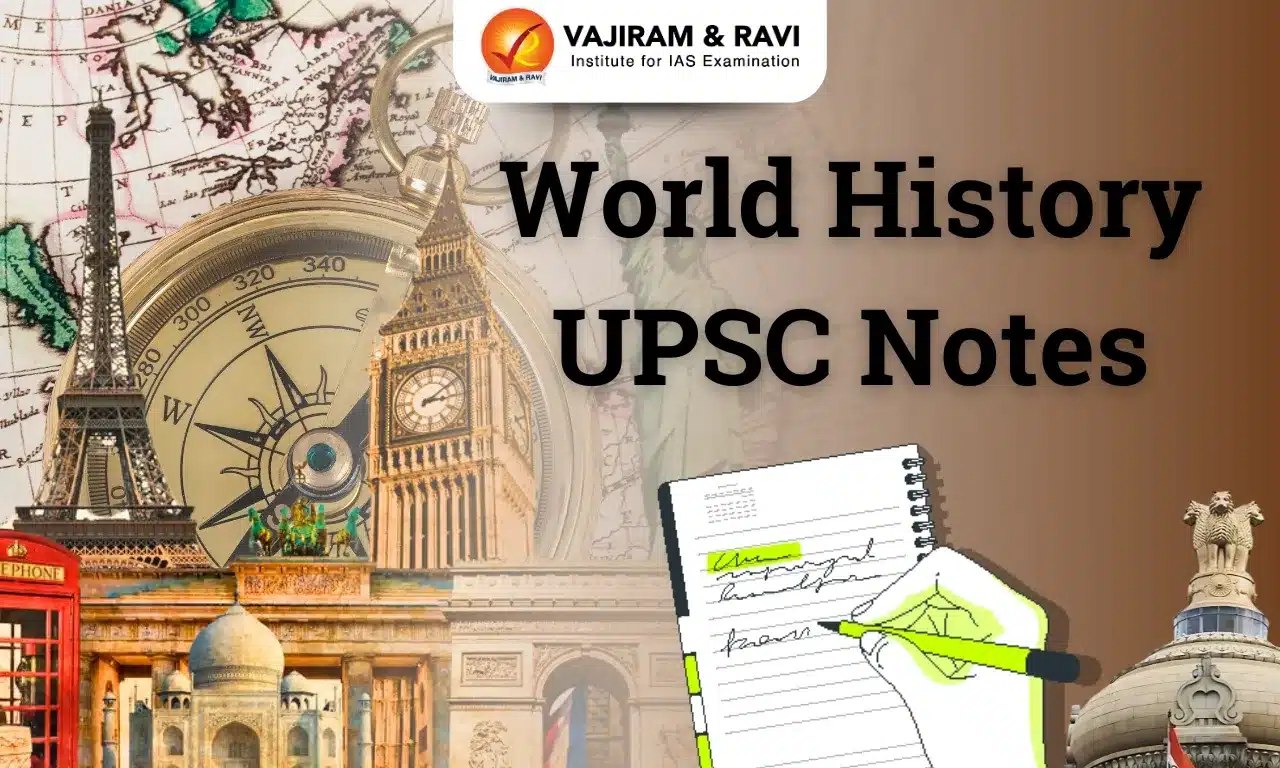The American Revolution was a pivotal event that took place between 1763 and 1783. It marked the struggle of the 13 American colonies against British rule, eventually leading to the establishment of the United States of America as an independent nation. The revolution was fueled by a combination of political, economic, and ideological factors that culminated in a fervent desire for liberty and self-determination.
Despite lacking the elements of social radicalism of the French Revolution, the American Revolution was more than merely a war of independence because it was the first time a written constitution was adopted by the people and a democratic republic was established.
American Revolution 1763 Causes
In colonial America, Britain implemented mercantilist policies that were intended to advance British economic interests, primarily in the form of a favourable trade balance. Following are the reasons that fuelled the American War of Independence and later, the American Revolution.
- Socio-Political Factors leading to American Revolution:
- As American colonies had people from different nationalities and races, it led to liberalism in society.
- When Americans got bothered about their economic and political upliftment,the exploitative policies of Britain were a cause of disappointment for the American people. Therefore, the ground was prepared for protest against British exploitation.
- Salutary neglect: Salutary neglect was the British government’s policy towards its colonies in North America from the early to the mid-18th century.
- This “salutary neglect” unintentionally contributed to the idea of autonomy of colonial legal and legislative institutions, which eventually led to American independence.
- The Seven Years’ War (1756–1763): It was a global conflict involving European great powers in alliances – one faction led by Britain and the other led by France. It was fought primarily in Europe and the Americas.
- The war created an economic crisis in England, and in this background, the British Parliament imposed taxes on American colonies like sugar duty, stamp duty, etc.
- The people of American colonies raised the issue of Gentleman’s resolution and gave the slogan of ‘no taxation without representation’.
- Americans took advantage of British engagements in the war and took their goods to different parts of the world.
- It gave practical taste to Americans about their economic status in the world.
- Thus, after 1760, Americans were not ready to bear the exploitative policies of Britain and the spark to fuel was given by Grenvile’s policy.
- Role of intellectuals: The intellectual class played an important role in the awakening and awareness of the masses. Eighteenth-century America saw the presence of this class.
- Thomas Paine: He wrote the book ‘Common Sense’, in which he talked about the exploitative policies of Britain and gave a solution for independence to America.
- Benjamin Franklin: He established ‘The Philosophical Society of America’. Its motive was to awaken the people against British exploitation.
- Henry Patrick: He played an important role in provoking the people. He said, ‘Give me death or independence’.
Events Leading to the American Revolution
The events leading up to the American Revolution were characterised by growing tensions between the American colonies and the British authorities after the Seven Years’ War.
Rise of Taxes
After the Seven Years’ War, the British Prime Minister, Grenville tried to pass on the burden of defence of America to the Americans.
- The Sugar Act of 1764 and the Stamp Act of 1765: These were the initial measures to raise resources.
- The Townshend Acts of 1767: The British imposed duties on essential goods such as paper, glass, lead and tea.
- This irritated Americans, and they stood up against the exploitation of Britain.
- It led to the birth of organisations like ‘Sons of Liberty’ and ‘Daughters of Liberty’ and raised the slogan of ‘no taxation without representation’.
- As a symbol of protest, they attacked stamp vendors and burned down the stamps.
Boston Massacre
With Grenvile’s departure, the new PM of Britain, Rockingham, considering stamp duty as the cause of protest abolished it. But the Finance Minister declared that Britain still has the right to impose a tax on America.
- Import duties: Britain increased import duties on articles imported by America, like glass, pepper, tea, etc.
- Boston protest: The rise in import duty annoyed Americans, and as a reaction to it, Samual Adams organised a mass protest in Boston.
- Boston massacre: To contain the protest, Britain used force, which led to the Boston massacre of 1770.
- This incident ruptured the relationship between America and Britain.
Lord North’s Tea Policy
While the East India Company was suffering from a financial crisis, Lord North, the new Prime Minister of Britain, came up with a tea policy under the Tea Act of 1773.
- Objectives: The tea policy of Lord North had two objectives.
- To relieve East India Company from the financial crisis.
- If Americans purchased tea, it meant that Americans accepted the right to impose a tax on them.
Boston Tea Party
- Lord North’s tea policy backfired upon him when Samual Adams entered Boston port on December 16, 1773, and threw away the containers of tea into the Atlantic.
- This was called the ‘Boston Tea Party’.
- The most important outcome of this party was the first Continental Congress.
First Continental Congress
- The First Continental Congress was organised in 1774 and was represented by members of twelve colonies (Georgia was absent).
- The delegation included leaders like Samuel Adams, George Washington and John Adams.
- They sent a petition to Britain, which was the symbol of the piece.
- It had two conditions:
- Britain should immediately remove all restrictions on trade and commerce.
- Americans should be given representation in Parliament.
Second Continental Congress
King George III underestimated American resistance and called it a revolt against Britain, which resulted in the Second Continental Congress in 1775.
- The Olive Branch Petition: It was adopted by Congress on July 5th, 1775, to be sent to King George III as a last attempt to prevent formal war from being declared.
- The Petition emphasised their allegiance to the British monarchy and their citizenship rights.
- The Olive Branch Petition was not even given a reading by the King.
- George III did not reply to the Olive Branch Petition, but on August 23rd, he did in response by issuing his own Proclamation of Rebellion.
Declaration of Independence
- In the Second Continental Congress of 4th July 1776, a five-man committee including Thomas Jefferson, Franklin and John Adams drafted (mainly written by Jefferson) the Declaration of Independence and declared that all men are equal in the eyes of the State.
- American War of Independence: The Declaration of Independence was the beginning of the American War of Independence under the leadership of George Washington, in which important battles were conquered.
- France entered the American Revolution in 1778, providing support to American colonies against Britain, seeking revenge for losing Canada. The Statue of Liberty, unveiled on October 28, 1886, was France’s friendship gift representing liberty and democracy.
- British forces surrendered at Yorktown, Virginia, in 1781, but the fighting formally ended in 1783.
The Treaty of Paris
The War with Britain ended with the Treaty of Paris in 1783. By this treaty, Britain gave independence to American colonies.
- Provisions of the Treaty:
- Britain acknowledged the 13 colonies’ independence and the creation of the United States of America as a new nation.
- The area bordered by the Mississippi River on the west and the 31st parallel in the mouth went to the USA.
- Certain British territories in the West Indies, India, and Africa were acquired by France.
- Spain obtained Florida from the United Kingdom, while Holland and England maintained the pre-war status quo.
American Revolution Impacts
The American Revolution had profound and far-reaching impacts, both domestically and internationally.
American Revolution Impacts Within America
- Blow to Loyalists: The loyalists, who supported Britain during the American War of Independence, constituted half a million people or 20% of white Americans.
- During the American Revolution, about 80,000 loyalists left the country, which made the old colonial patrimonial power structure weaker.
- Collapse of mercantilism: America was subject to several restrictions imposed by the British Empire, including limitations on trade, settlement, and manufacturing.
- The collapse of mercantilism was the most significant long-term economic impact of the Revolution.
- New markets and commercial ties were made possible by the American Revolution.
- Constitution: The United States became the first country to have a written constitution providing fundamental rights to the citizens.
- The Bill of Rights under the American Constitution came into effect on December 15, 1791.
- It limited the powers of the federal government of the United States and protected the fundamental rights of all citizens, residents and visitors in American territory.
- The adoption of the constitution, granting civil rights and establishing a democratic republic changed the nature of the American War of Independence to the American Revolution.
American Revolution Impacts on the World
- Blow to the image of Britain: American independence was a great blow to the invincible image of Great Britain.
- To spread the idea of democracy and republic: The American Revolution introduced and popularised the concepts of democracy and constitutional republic.
- Towards equality: The notion of individual rights and liberties gained prominence.
- The USA as a land of freedom: The United States became a symbol of freedom and opportunities for settlers.
- Emphasis on education: Education gained importance as a means to foster an informed and enlightened citizenry.
- Spread of federalism: The American Revolution popularised the principle of federalism, which emphasises a division of power between a central government and regional governments.
- Inspiring freedom struggle: The American Revolution was the world’s first anti-colonial revolution. It inspired the freedom struggle in other colonies including India.
Last updated on August, 2025
→ UPSC Mains Admit Card 2025 will be released soon at www.upsc.gov.in.
→ UPSC Mains 2025 will be conducted on 22nd August 2025.
→ UPSC Notification 2025 was released on 22nd January 2025.
→ UPSC Calendar 2026 is released on 15th May, 2025.
→ UPSC Prelims Question Paper 2025 and Unofficial Prelims Answer Key 2025 are available now.
→ UPSC Prelims Result 2025 is out now for the CSE held on 25 May 2025.
→ The UPSC Vacancy 2025 were released 1129, out of which 979 were for UPSC CSE and remaining 150 are for UPSC IFoS.
→ UPSC Prelims 2026 will be conducted on 24th May, 2026 & UPSC Mains 2026 will be conducted on 21st August 2026.
→ The UPSC Selection Process is of 3 stages-Prelims, Mains and Interview.
→ UPSC Result 2024 is released with latest UPSC Marksheet 2024. Check Now!
→ UPSC Toppers List 2024 is released now. Shakti Dubey is UPSC AIR 1 2024 Topper.
→ Also check Best IAS Coaching in Delhi
American Revolution FAQs
Q1. What was the American Revolution?+
Q2. What were the main causes of the American Revolution?+
Q3. When did the American Revolution start and end?+
Q4. Who were the people who took part in the American Revolution?+
Q5. What was the significance of the Declaration of Independence?+
Tags: american revolution american revolution 1763 upsc world histroy notes













